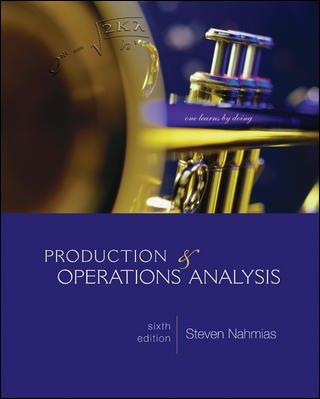

Delsing Canning Company is considering an expansion of its facilities. Its current income statement is as follows: Sales 5,700,000 2,850,000 Variable costs (50% of sales) Fixed costs 1.870.000 Earnings before interest and taxes (EBIT) 980,000 Interest (10% cost) 340.000 Earnings before taxes (EBT 640.000 Tax (35%) 224.000 416,000 Earnings after taxes (EAT Shares of common stock 270,000 Earnings per share 1.54 The company is currently financed with 50 percent debt and 50 percent equity (common stock, par value of $10). In order to expand the facilities, Mr. Delsing estimates a need for $2.7 million in additional financing. His investment banker has laid out three plans for him to consider: 1. Sell $2.7 million of debt at 9 percent. 2. Sell $2.7 million of common stock at $25 per share 3. Sell $1.35 million of debt at 8 percent and $1.35 million of Common stock at $30 per share Variable costs are expected to stay at 50 percent of sales, while fixed expenses will increase to $2,370,000 per year. Delsing is not sure how much this expansion will add to sales, but he estimates that sales will rise by $1.35 million per year for the next five years Delsing is interested in a thorough analysis of his expansion plans and methods of financing.He would like you to analyze the following a. he break-even point for operating expenses before and after expansion (in sales dollars). (Enter your answers in dollars not in millions, i e, $1,234,567.) Break-Even Point Before expansion After expansion b. The degree of operating leverage before and after expansion. Assume sales of $5.7 million before expansion and $6.7 million after expansion. Use the formula: DOL (S TVC) (S-TVC FC). (Round your answers to 2 decimal places.) egree of operating Leverage Before expansion After expansion Delsing Canning Company is considering an expansion of its facilities. Its current income statement is as follows: Sales 5,700,000 2,850,000 Variable costs (50% of sales) Fixed costs 1.870.000 Earnings before interest and taxes (EBIT) 980,000 Interest (10% cost) 340.000 Earnings before taxes (EBT 640.000 Tax (35%) 224.000 416,000 Earnings after taxes (EAT Shares of common stock 270,000 Earnings per share 1.54 The company is currently financed with 50 percent debt and 50 percent equity (common stock, par value of $10). In order to expand the facilities, Mr. Delsing estimates a need for $2.7 million in additional financing. His investment banker has laid out three plans for him to consider: 1. Sell $2.7 million of debt at 9 percent. 2. Sell $2.7 million of common stock at $25 per share 3. Sell $1.35 million of debt at 8 percent and $1.35 million of Common stock at $30 per share Variable costs are expected to stay at 50 percent of sales, while fixed expenses will increase to $2,370,000 per year. Delsing is not sure how much this expansion will add to sales, but he estimates that sales will rise by $1.35 million per year for the next five years Delsing is interested in a thorough analysis of his expansion plans and methods of financing.He would like you to analyze the following a. he break-even point for operating expenses before and after expansion (in sales dollars). (Enter your answers in dollars not in millions, i e, $1,234,567.) Break-Even Point Before expansion After expansion b. The degree of operating leverage before and after expansion. Assume sales of $5.7 million before expansion and $6.7 million after expansion. Use the formula: DOL (S TVC) (S-TVC FC). (Round your answers to 2 decimal places.) egree of operating Leverage Before expansion After expansion








